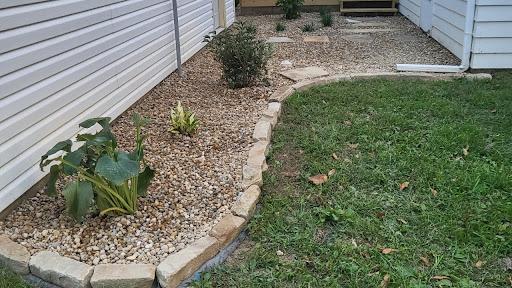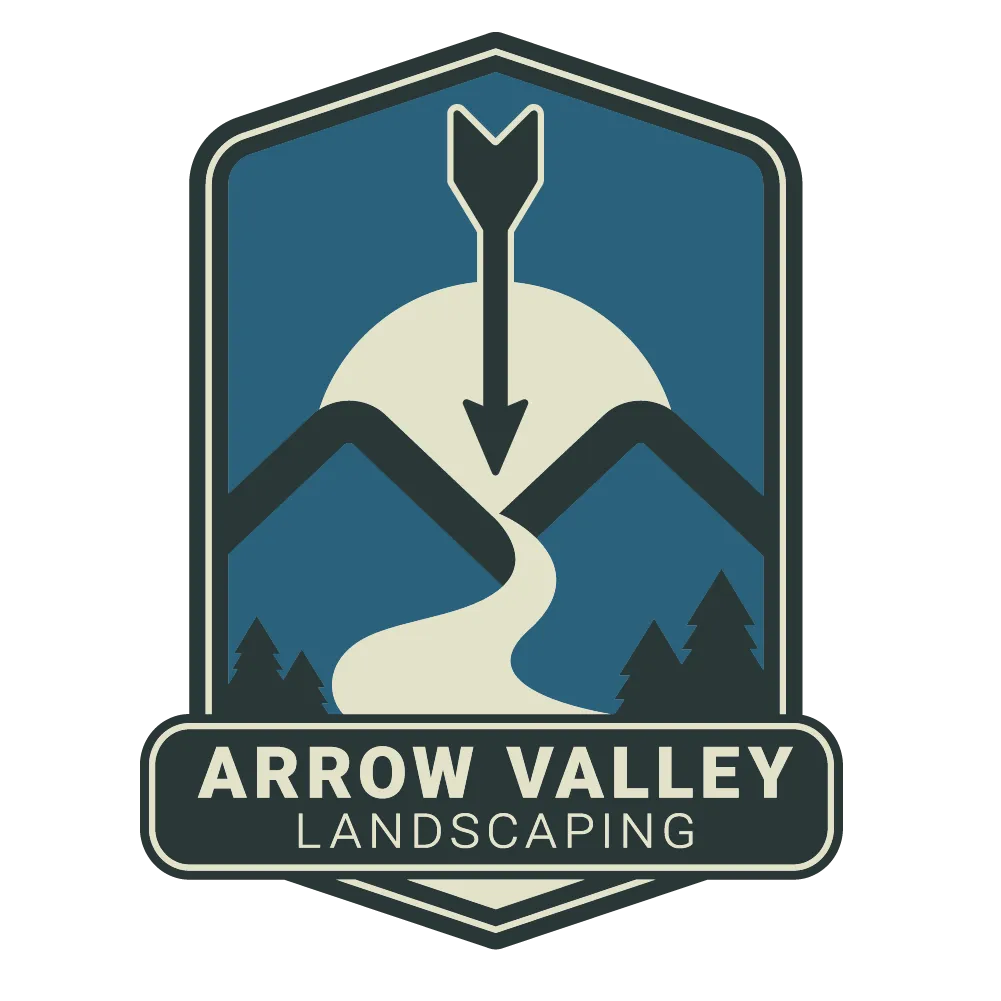Blogs

How To Design Landscaping For Different Soil Types?
Design landscaping based on soil type by choosing compatible plants and techniques. For sandy soil, use drought-tolerant plants and add organic matter for moisture retention. In clay soil, select wet-tolerant plants and improve drainage with compost. Loamy soil supports a wide variety of plants due to its balanced texture. For rocky or shallow soil, use native plants and ground covers, and consider raised beds. Adjust irrigation and mulching accordingly for best results.
By tailoring your landscaping approach to the specific soil conditions, you can create a thriving garden that enhances the beauty and functionality of your outdoor space. This guide will walk you through the main soil types, soil improvement techniques, and the design process to help you achieve the best results for your landscape. Arrow Valley Landscaping, Madison County's #1 premium landscape company is here to assist you in designing and building your perfect outdoor living space.
Key Takeaways
Understand the specific characteristics of clay, sandy, loam, and silt soils.
Improve soil quality with organic matter, proper pH adjustments, and mulching.
Conduct a thorough site analysis to guide your design process.
Use functional planning to balance aesthetics and practicality.
Develop a detailed final design that considers soil types and plant needs.
Understanding Soil Types
1. Clay Soil
Characteristics: Clay soil is dense and heavy, retaining moisture well but becoming compacted and hard when dry.
Landscaping Tips:
Drainage: Improve drainage by adding organic matter such as compost or peat moss.
Plant Selection: Choose plants that thrive in wet conditions, such as ferns, hibiscus, and bee balm.
2. Sandy Soil
Characteristics: Sandy soil has larger particles that allow for good drainage but poor nutrient retention. It warms up quickly in spring but dries out fast.
Landscaping Tips:
Watering: Increase watering frequency to compensate for quick drying.
Plant Selection: Opt for drought-resistant plants like succulents, yucca, and palms that can thrive in well-drained conditions.
3. Loam Soil
Characteristics: Loam is a balanced mixture of clay, sand, and silt, making it the ideal soil type for most plants. It retains moisture and nutrients effectively.
Landscaping Tips:
Maintenance: Regularly add organic matter to maintain soil health.
Plant Selection: A wide variety of plants can thrive in loam, making it versatile for landscaping designs.
4. Silt Soil
Characteristics: Silt soil has fine particles that hold moisture well but can become compacted. It is fertile and good for plant growth.
Landscaping Tips:
Aeration: Aerate the soil to prevent compaction.
Plant Selection: Suitable for many garden plants, including vegetables and flowers.
Soil Improvement Techniques
Organic Matter: Adding compost, leaf mold, or well-rotted manure can enhance soil structure, improve drainage, and increase nutrient content across all soil types.
pH Testing: Conduct soil tests to determine pH levels and amend accordingly. Most plants prefer a pH between 6.0 and 7.0. Lime can be added to raise pH, while sulfur can lower it.
Mulching: Applying mulch can help retain moisture, suppress weeds, and improve soil quality as it decomposes over time.
Design Process
1. Site Analysis
Conduct a thorough analysis of the site to determine soil type, drainage, climate, and existing vegetation. This helps in selecting appropriate plants and designing effective layouts.
2. Functional Planning
Create diagrams that designate activity spaces and plant placements based on the site analysis. This ensures that the landscape meets both aesthetic and functional needs.
3. Final Design
Develop a detailed landscape plan that includes hardscaping and planting details, considering how each plant will perform in its designated soil type.
Benefits of Using Native Plants in Landscaping
Incorporating native plants into your landscaping offers an array of advantages, making your garden both beautiful and environmentally friendly. Native plants are inherently adapted to the local climate and soil conditions, reducing the need for excessive watering, fertilizers, and pesticides. This means lower maintenance and cost savings for homeowners. Moreover, native plants play a crucial role in supporting local wildlife by providing essential habitat and food sources, thereby enhancing biodiversity. They are also effective in preventing soil erosion and improving soil health, making them a sustainable choice for any garden. By choosing native plants, you contribute to the preservation of the natural environment while creating a resilient and attractive landscape.
Key Benefits:
Reduced maintenance
Enhanced biodiversity
Improved environmental sustainability
Lower water usage
Less need for fertilizers and pesticides
Support for local wildlife
Prevention of soil erosion
Improved soil health
Creating a Water-Efficient Landscape
Water-efficient landscaping, or xeriscaping, aims to minimize water use while maintaining a functional and visually appealing outdoor space. This approach involves selecting drought-tolerant plants, implementing efficient irrigation systems, and using mulch to retain soil moisture. By designing your landscape with water efficiency in mind, you can significantly reduce your water bills, lessen your environmental impact, and create a sustainable garden that thrives even in dry conditions. Proper planning and plant selection are essential to achieving a water-efficient landscape that meets both aesthetic and practical needs. This method not only conserves water but also ensures that your garden remains lush and vibrant throughout the year.
Key Principles:
Selecting drought-tolerant plants
Implementing efficient irrigation systems
Incorporating mulch to retain soil moisture
Proper planning and plant selection
The Role of Hardscaping in Landscape Design
Hardscaping refers to the non-plant elements in a landscape, such as patios, walkways, retaining walls, and outdoor kitchens. These features add structure, functionality, and aesthetic appeal to your outdoor space. Hardscaping creates defined areas for relaxation, entertainment, and movement, enhancing the usability of your property. It can also help manage water flow and prevent erosion, particularly in challenging soil conditions. When integrated with softscaping (plants), hardscaping contributes to a balanced and cohesive landscape design. Properly designed hardscaping can significantly increase the value and appeal of your outdoor living space, making it a crucial element in any comprehensive landscape plan.
Key Elements:
Patios and walkways
Retaining walls
Outdoor kitchens and living spaces
Water flow and erosion management
Integration with softscaping
Importance of Soil Testing Before Landscaping
Soil testing is an essential step in the landscaping process, providing critical information about your soil's nutrient levels, pH, and composition. This knowledge allows you to make informed decisions about soil amendments, plant selection, and fertilization. Soil testing helps identify any deficiencies or imbalances that could impede plant growth, enabling you to address these issues before planting. Ensuring optimal soil conditions for your chosen plants leads to healthier growth and better yields. Conducting soil tests before starting your landscaping project can significantly enhance the success and longevity of your garden, making it a fundamental practice for any serious gardener.
Key Benefits:
Informed decisions on soil amendments
Optimal plant selection and fertilization
Identification of nutrient deficiencies
Improved plant health and yields
How to Create a Low-Maintenance Garden
Designing a low-maintenance garden involves selecting plants and features that require minimal care, allowing you to enjoy your outdoor space without constant upkeep. Choose native or drought-tolerant plants that thrive in your local climate with little intervention. Implement efficient irrigation systems, such as drip irrigation, to reduce water usage and manual watering efforts. Use mulch to suppress weeds and retain soil moisture, further reducing maintenance needs. Incorporate easy-to-maintain hardscaping elements, and avoid high-maintenance plants that require frequent pruning or fertilizing. A well-planned low-maintenance garden not only saves time and effort but also ensures a beautiful and sustainable outdoor space.
Key Strategies:
Selecting low-maintenance plants
Implementing efficient irrigation systems
Using mulch to suppress weeds and retain moisture
Incorporating easy-to-maintain hardscaping
Avoiding high-maintenance plants
FAQs
1. How do I determine my soil type?
You can determine your soil type by conducting a simple soil test. Collect a sample and observe its texture, moisture retention, and particle size. For precise results, consider sending a sample to a local agricultural extension office for analysis.
2. Can I improve clay soil for better drainage?
Yes, you can improve clay soil by adding organic matter such as compost, peat moss, or sand. These amendments help break up the dense soil, enhancing its drainage and aeration.
3. What plants are best for sandy soil?
Drought-tolerant plants such as succulents, yucca, and palms are ideal for sandy soil. These plants can thrive in well-drained conditions and require less frequent watering.
4. How often should I test my soil?
It's recommended to test your soil every 2-3 years or whenever you notice significant changes in plant health or growth. Regular testing helps you maintain optimal soil conditions for your landscape.
5. What is the best mulch for landscaping?
Organic mulches such as wood chips, bark, and straw are excellent for landscaping. They decompose over time, enriching the soil with nutrients, and help retain moisture and suppress weeds.
Designing for Soil Success with Arrow Valley Landscaping
Creating a successful landscape design involves understanding your soil type and implementing appropriate techniques to enhance soil quality. By following the guidelines provided, you can create a beautiful and thriving garden that suits your specific soil conditions.
At Arrow Valley Landscaping, we specialize in designing and building custom outdoor living spaces that maximize the potential of your property. Our expertise ensures that every landscape we create is both functional and visually stunning, tailored to meet your needs and preferences.
Contact us today to schedule a consultation and take the first step towards your dream landscape. Enhance your property's beauty and value with Madison County's #1 premium landscape company.

With years of experience serving Illinois, we’re proud to be the trusted choice for a professional and high quality landscaping.
Contact Us
Phone:
Email:
Address
© 2026 Arrow Valley Landscape ltd. All Rights Reserved. Privacy Policy. Web Design by Fused Media



